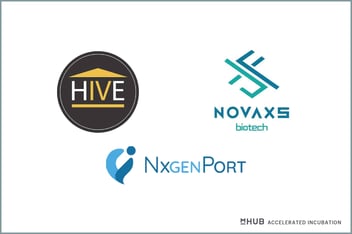How Crimson Scientific is Bringing ECG Technology into the 21st Century
In the fast-paced world of emergency medicine, every second counts. Yet, for decades, one critical diagnostic tool has remained stubbornly stuck in the past: the electrocardiogram (ECG). Dr. Michael Cetta, an emergency medicine physician with 25 years of experience, witnessed these inefficiencies firsthand.
“Every day, I saw delays in patient care because placing ECG electrodes was too time-consuming and complicated,” Dr. Cetta recalls. "Medical staff often struggled with electrode placement, interference from sweat or chest hair, and the bulkiness of traditional machines. These challenges weren’t just frustrating—they were barriers to timely, effective patient care."
Determined to find a better way, Dr. Cetta founded Crimson Scientific, a startup dedicated to revolutionizing ECG technology.

Taking a new approach to ECG technology
Crimson Scientific’s solution is as transformative as it is simple: a weighted pad that rests on a patient’s chest, capturing ECG data without the need for shaving, adhesives, or precise electrode placement. Unlike traditional ECG machines, which require multiple steps and often pull healthcare providers away from the bedside, Crimson’s device is designed to be quick, reusable, and cost-effective.
“Our solution is about simplicity,” explains Dr. Cetta. “It’s about removing the barriers that slow down care. With our device, you just place the mat on the chest, and you’re done. No wires, no mess, no delays.”
This innovation has the potential to transform cardiac diagnostics, making ECGs faster, simpler, and more accessible for healthcare providers and patients alike.
Finding success through diverse expertise
Crimson Scientific’s strength lies in its team, which combines medical knowledge, engineering expertise, and business acumen. Dr. Cetta brings 25 years of clinical experience, offering a deep understanding of the challenges faced in emergency care. Mark Zackary, a biomedical engineer with a Master’s in Electrical Engineering and Computer Science and an MBA from MIT, contributes expertise in medical devices, business management, and electrical engineering. Kevin Chung, the lead engineer, holds a Ph.D. in Bioengineering from MIT and specializes in vector cardiography and bioengineering.
“We’re like a three-legged stool,” says Dr. Cetta. “Each of us brings a critical piece to the table, and together, we’re able to tackle this problem from every angle.”
Overcoming the barriers of medical device development
Bringing an innovative ECG solution to market presents challenges. For Crimson Scientific, the primary hurdle has been optimizing signal capture to ensure the device works effectively across all body types while remaining cost-effective.
Despite these obstacles, the team has achieved significant progress. They developed a prototype capable of capturing 19-leads ECG data without requiring skin preparation—a major milestone. Additionally, they’ve conducted extensive customer interviews in acute and post-acute care settings to validate the demand for their solution and refine their design.
Advancing the future of cardiac care with AI
Crimson Scientific has ambitious plans for the future. Over the next six months, the team aims to finalize their design, secure funding, and begin the regulatory approval process. But their vision extends far beyond improving ECGs.
Future iterations of the device will incorporate AI and machine learning to enhance diagnostic accuracy, potentially catching subtle cardiac issues that are often missed. The team also envisions adding features like temperature monitoring, pulse oximetry, and even defibrillation capabilities.
“We see a future where our device is a complete cardiac monitoring tool, not just an ECG replacement,” Dr. Cetta explains.

Selecting mHUB to scale Crimson Scientific
For the team at Crimson Scientific, mHUB’s ecosystem of corporate partners, state-of-the-art prototyping labs, and a vast mentor network provided the ideal launchpad to accelerate their medical device development.
“Our device has a relatively short path to commercialization compared to other medical devices,” says Dr. Cetta. “We wanted to immerse ourselves in an ecosystem that could help us move quickly and efficiently. mHUB was the obvious choice.”
A mission that drives the team forward
What keeps the Crimson Scientific team motivated through challenges? The knowledge that their work could revolutionize cardiac care and impact millions of lives.
“We’re not just building a device,” says Dr. Cetta. “We’re building a solution that could fundamentally change how cardiac care is delivered. That’s what drives us.”
As Crimson Scientific continues to push the boundaries of cardiac diagnostics, one thing is clear: the future of ECG innovation is here, and it’s simpler, smarter, and more accessible than ever before. For Dr. Cetta and his team, the mission is just beginning—and the impact could be transformative.
Learn more about how mHUB supports early-stage medical device companies
mHUB has supported over 1,200 innovators by providing a hyper-resourced environment with the goal of commercializing new hardtech innovation. The mHUB community has generated more than $1.96B in revenue, launched more than 1,700 products, hired more than 6,800 employees, and raised over $2.02B in capital. To date, mHUB has invested in 54 startups across smart and sustainable manufacturing, energy tech, and medtech.
Learn more about their MedTech accelerator program and venture capital fund, mHUB Ventures.





